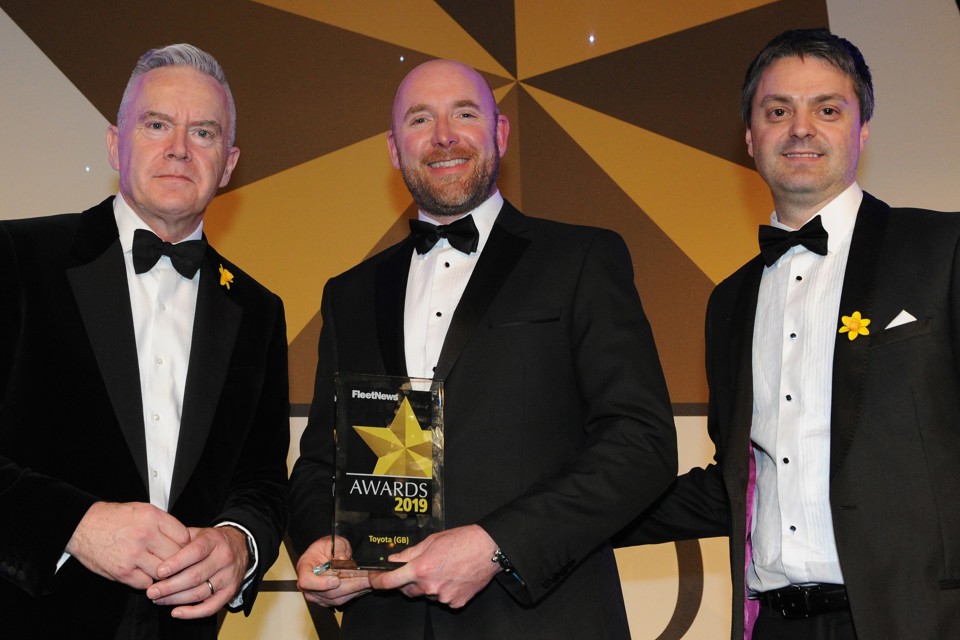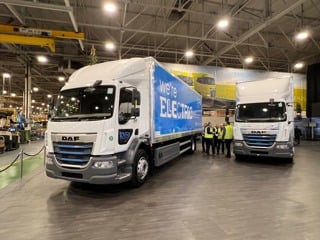Toyota Lexus retained the Fleet News Green Fleet Manufacturer of the Year, the third time in the past four years it has been recognised as the most environmentally aware automotive company.
Green has coursed through its veins since the launch of the Prius hybrid in 1997 (Japan-only, the second generation model came to the UK in 2000).
Toyota has ploughed its own furrow by putting its weight behind ‘self-charging’ hybrid as the short-term solution and hydrogen as the long-term.
While plug-in hybrid and full battery electric will come (Toyota has the PHEV Prius), it is not the solution for today, according to general manager, fleet operations Stuart Ferma.
Ferma, appointed at the start of 2019, has a busy – nay unprecedented – schedule ahead: coordinating the introduction of five new models in the first half of the year.

Fleet News: It is an extremely busy time for Toyota and Lexus with launches of the Corolla, Rav4, Camry, ES and UX by July. How are you positioning these cars in the market?
Stuart Ferma: We have a TCO message that is extremely strong and our BIK message is also powerful. Then we have great cars. Akio (Toyoda, Toyota Motor Corporation president) said ‘no more boring cars’, so with the styling and driving performance of our latest models, we are ticking all the boxes.
Our fourth generation hybrid system delivers real-world fuel savings as well as reliability and other SMR savings from reduced brake and tyre wear.
The hybrid system is the most reliable part of our car and the battery is most reliable part of the hybrid system. We also have strong residual values (e.g. Corolla stands at 49% versus a competitor average of 38%, according to the pricing guides).
Our order bank has been phenomenal – demand is well ahead of supply.
FN: You have remained committed to hybrid as the short-term solution while others have gone straight to full electric. Why are you convinced this is the right strategy?
SF: We have the right proposition for the market today and the market is now looking at us as a viable alternative. For years we have knocked on doors to compete against diesel.
Now people are approaching us to green their fleet in an affordable way. We are seeing diesel fleets, both private and public sector, that want to move to an electric fleet but they have no options so they are coming to us as the current option.
Toyota is predominantly hybrid from a fleet sales point of view because it is available across the range; the only diesel we have is the Land Cruiser. And almost all our Lexus sales are now hybrid.
Our total hybrid sales were up 27% last year and so far this year they are up by 32%. It is virtually all self-charging, not plug-in hybrid – in total 61% of our sales are hybrid.
There is a perception that diesel is best for the motorway, but we believe our self-charging hybrid is just as good and it’s much better in urban areas. We have to get the message out there and challenge the old perceptions.
FN: How are you doing this?
SF: We are proactive in putting our vehicles out in the marketplace with our dealers to facilitate the message and our dealers are excited about our latest products.
FN: Is hydrogen still the long-term future?
SF: Yes, it is our future, although we see a mix of powertrains for different uses. We will bring plug-in hybrid cars when the market is ready for them and they can be utilised for the best of the environment.
At the moment, the main driver is taxation. We will also have three battery electric vehicles in Europe by 2021. We are renowned for being green; it’s in our DNA so we will do the right thing with our products when we bring them to market.
The infrastructure has to be there and the cars have to be sold for the right reasons.
FN: What is the Toyota roadmap?
SF: We are targeting zero emissions from our vehicles by 2050. We are ahead of the curve within the market (Toyota retained top spot in Jato’s 2018 report with average CO2 emissions of 99.9g/km – the only carmaker below 100). Hydrogen can work now but the lack of infrastructure is holding it back.
Jon Hunt, manager, alternative fuels: Our production plan was set to grow steadily to 3,000 (hydrogen) units a year by 2018 to demonstrate proof of concept and to match the limited infrastructure, from 700 units in 2015.
Almost 8,000 are on the road now globally. The first significant wave of growth will be in the early 2020s with more manufacturers entering the market as well as our own new products.
We have announced a production capacity of 30,000 units from the early 2020s. Before 2030, we expect parity pricing with mainstream products.
Despite some of the comments you see at the moment, it is proving difficult for anyone to deliver viable and practical battery electric solutions. Even the London electric taxi is a range extender with an EV range of around 60 miles.
Green Tomato Cars are doing 150-200 miles a day in their Mirai – you could not do that regularly with a BEV (battery electric vehicle). The Mirai range is 300 miles and it can be refilled in minutes.
FN: You’ve had a strong first quarter, how do you see the rest of 2019?
SF: There is a lot of uncertainty but we are in a great place. We have a modest market share so we have a lot to go for and we are the natural choice for greener vehicles.
We were ahead of the curve on WLTP and the impact has been lower on our cars than other manufacturers. So far this year, we are ahead of our plan. Fleet is diverse and from our hybrid Yaris to our LS hybrid and our LCVs, we now have every segment covered.
Our priority is to get dealers to appreciate fleet as much as retail. We have 183 Toyota centres and 47 Lexus ones – that’s 230 touchpoints with the customer.
Our focus is on local dealers supplying locally with a great handover and level of service throughout the ownership period.
Green for Toyota is about more than the vehicles. Its Epsom, Surrey, head office sits in an ecological habitat landscaped with Kew Gardens to provide a haven for indigenous species.
It keeps bees to harvest their honey, staff have been given water bottles to rid the site of plastic and the building is zero waste to landfill and incineration.
“It’s a statement about our business but also about our customers when they do business with us,” says Ferma. “In our heart we are green. We do it because it’s the right thing to do.”






















Login to comment
Comments
No comments have been made yet.